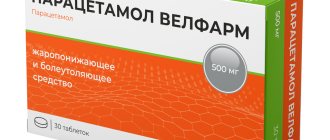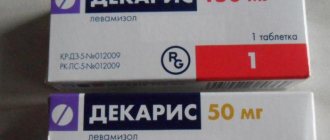Allergies are a fairly common problem. Sneezing, itching, inability to enjoy nature, animals and much more... It affects the general condition of a person, irritability, fatigue, and bad mood appear.
But now the pharmaceutical industry makes it possible to successfully combat the disease. Now allergy symptoms can be eliminated with the help of medications, one of which is Cetrin.
Allergy medications
pharmachologic effect
Cetrin belongs to the group of antiallergic drugs. Its therapeutic activity is based on the suppression of type H1 histamine receptors.
The drug has an antipruritic, antiexudative effect. Helps reduce swelling, local hyperemia and other local symptoms.
Cetrin can be used for a wide range of diseases. For rhinitis, it helps relieve a runny nose, nasal congestion, suppresses sneezing, itching and excessive lacrimation.
A special therapeutic effect is observed at the initial stage of the pathology. In the late stage, a decrease in the production of mediators is recorded. When Cetrin interacts with allergens, there is a decrease in vascular permeability, tissue swelling and muscle spasms.
There is no antiserotonin and anticholinergic effect. When taking a daily dosage of no more than 25 mg, cognitive ability is not impaired.
After a long course of treatment, drug dependence does not develop.
The components of the product are quickly absorbed by the digestive tract, the maximum time for the pharmacological effect to occur is 1 hour.
What generations of antiallergic drugs exist?
First, let's figure out what generations of antihistamines exist. This is important, since the effectiveness of drugs and the ability to influence the central nervous system depend on the generation. The drugs include active substances - histamine receptor blockers. And as you know, histamine is responsible for the appearance of a reaction to an irritant (itching, redness, swelling, rashes), it is he who starts this process.
Today, there is a division of antiallergic drugs into generations. There are only three of them. Cetrin belongs to the second.
- I generation
Suprastin, Tavegil, Diazolin, Fenistil, etc. non-selective in their action on receptors. This means that they affect the central nervous system and gastrointestinal tract. Such indiscriminateness gives rise to a powerful antihistamine effect, but drowsiness appears as a “side effect”.
- II generation
Zyrtec, Zodak, Cetrin, Cetirizine, Parlazine, etc. have less effect on the central nervous system, since they are selective with respect to receptors. Accordingly, drowsiness as an adverse reaction is less pronounced. But with selectivity, the effectiveness of anti-allergy drugs disappears when compared with the first generation.
- III generation
Claritin, Erius, etc. characterized by high selectivity for histamine receptors. Drugs of this generation do not interact with the central nervous system, and such behavior entails the absence of drowsiness as a side reaction of the body. As for the effectiveness against allergies, these drugs are no lower than when compared with the first generation.
Why is Cetrin prescribed?
Regardless of the dosage form, Cetrin has general indications for use. Its use is relevant for the treatment of the following conditions:
- Rhinitis is chronic and seasonal.
- Allergic conjunctivitis.
- Hives.
- Quincke's edema.
- Dermatitis of allergic origin, characterized by intense itching.
- Bronchial asthma.
Analogs
The pharmacological market offers quite a lot of synonyms (contains cetirizine) and analogues (drugs of similar therapeutic action, that is, histamine blockers).
First generation antihistamines are usually cheaper. But, importantly, they are not highly selective and cause adverse reactions from the central nervous system. Analogues that are part of the third generation act selectively, do not affect the nervous system, but are more expensive.
Analogs
Synonyms: Cetirizine, Zyrtec, Zodak, Parlazin.
Analogues: Glencet, Claritin, Xizal, Suprastinex, Tavegil, Loratadine, Erius, Ketotifen, Claridol, Clarotadine.
- Tsetrin/Zodak
The active ingredient of Zodak is cetirizine. We can conclude that there is no difference between them. Cetrin is cheaper than the Czech drug-synonym.
- Tsetrin/Tavegil
The active component of Tavegil is clemastine, a first generation histamine blocker.
Interestingly, drowsiness occurs quite rarely when taking Tavegil. Tavegil in ampoules is used in the treatment of allergies, as well as as a complete remedy for Quincke's edema and anaphylactic shock.
The effect of clemastine lasts for 12 hours, and cetirizine for 24 hours. Taking Cetrin is not accompanied by drowsiness, and, unlike clemastine, it is not metabolized in the body.
Tavegil is well studied, has an injectable dosage form and is cheaper than Cetrin.
- Cetrin/Claritin, Loratadine
The effectiveness of both products is comparable, but Cetrin shows itself better for skin manifestations of allergies.
- Cetrin/Erius
The active ingredient is desloratadine, a third generation histamine blocker. It extremely rarely causes side effects. Therefore, taking Erisu is recommended for long-term therapy. Erius is stronger and more effective than Cetrin.
- Cetrin/Suprastin
The active ingredient is chloropyramine hydrochloride. Suprastin is effective for 3-6 hours. But it has quite a lot of side effects: drowsiness, loss of energy, stool disturbances, dry mucous membranes, nausea, vomiting, increased eye pressure. Suprastin should not be used in children under 3 years of age. Moreover, it cannot be used as a prevention against allergies. The effectiveness of Cetrin is slightly higher. It causes virtually no side effects, especially drowsiness.
Side effects
Side effects when taking antihistamines do not occur often. Drowsiness and a feeling of dry mouth may occur. Less commonly noted:
- Severe headaches.
- Dizziness.
- Dyspeptic disorders.
- Migraine.
- Allergic reactions - itching, swelling, hyperemia, skin rashes. In severe cases, urticaria and angioedema develop.
Indications
Cetrin syrup and tablets are effective for the following conditions:
- hay fever;
- allergic rhinitis/conjunctivitis;
- hives;
- allergic dermatoses with severe itching;
- Quincke's edema;
- atopic bronchial asthma.
Contraindications
Cetrin, both in the form of tablets and in the form of syrup, is prohibited from use in the presence of the following conditions:
- hypersensitivity or allergy to the active or auxiliary components of the drug (cetirizine, hydroxyzine);
- pregnancy period;
- breast-feeding;
- children under 2 years of age (for syrup);
- children under 6 years of age (for tablets);
- Cetrin syrup is not used in patients with calcium deficiency, intolerance to sucrose-isomaltose, fructose, or glucose/galactose malabsorption syndrome.
For patients with chronic renal failure and the elderly, the daily dose of Cetrin is selected individually. The therapeutic course is carried out under the supervision of the attending physician.
Side effects
Cetrin is quite well tolerated and does not often cause a negative response from the body. But still, after taking the drug, the following adverse reactions may be noted:
- headache;
- discomfort in the stomach/intestines (flatulence, abdominal pain, dyspepsia, flatulence, constipation, diarrhea);
- migraine;
- dizziness;
- hypersensitivity reactions (rash, itching, urticaria, Quincke's edema);
- dry mouth;
- drowsiness.
How to take Cetrin
Cetrin is taken orally, by mouth, without chewing, regardless of whether you eat or not. You should take the tablet with a small amount of clean water. Since Cetrin is rare, but causes drowsiness, and can be taken once a day, it is recommended to postpone its intake to the evening, and drink Cetrin before bed.
How to take Cetrin tablets correctly
The daily dose for an adult is 10 mg (10 ml of syrup). The maximum daily dose is 20 mg.
Syrup
- children over 6 years of age and adults: 10 ml of Cetrin syrup 1 time/day. or 2 times/day. 5 ml each;
- children 2-6 years old: 5 ml. 1 time/day or 2.5 ml 2 times/day;
- patients with reduced renal function: 5 ml 1 time/day, and in case of severe renal failure 5 ml of syrup every other day. Moreover, if the Clcr value does not exceed 10 ml/min, the use of the drug is contraindicated.
Pills
- children over 6 years of age and adults: 10 mg (1 tablet per day) 1 time / day. or 2 times/day. 1/2 tablet;
- patients with reduced renal function: the dose is selected individually. Usually the dose is reduced by 2 times, it is possible to use 1/2 tablet every other day. If Clcr does not exceed 30 ml/min, a dose of 5 mg should be taken every other day.
The exact dosage and duration of taking the drug is prescribed by the attending physician!
The clinical picture, symptoms and nature of the course of the disease determine the duration of therapy with Cetrin. To relieve an acute allergic reaction, the drug is taken for two weeks. At the same time, if the symptoms disappear before the specified period, stop taking Cetrin. However, it should be remembered that Cetrin can be continuously used as a therapeutic agent for no longer than 14 days.
If Cetrin is prescribed as a prophylaxis so that the allergy does not return with renewed vigor and in an acute form, then on average this course will last 1-1.5 months.
Cetrin also showed good results in the treatment of bronchial asthma. It is used as the basis for complex treatment of this disease. The course lasts 15-20 days, after which a week-long break is prescribed, then the drug is resumed. Children under 7 years of age who are prone to dermatitis take Cetrin 3-4 times a year. This course lasts about 10-14 days.
As for the combined use of Cetrin and alcohol, you should refrain from drinking alcoholic beverages during therapeutic treatment.
Instructions for use of Cetrin
The treatment regimen for Cetrin differs depending on the dosage form. The dose and course of therapy are determined by the doctor based on the diagnosis and age of the patient.
The drug in tablet form is intended for oral administration. They are drunk at any time of the day before or after meals, washed down with the required amount of water.
Adult patients are prescribed 10 mg of the drug per day once or divided into 2 approaches.
In case of kidney disease, the dosage is calculated individually. As a rule, it is reduced by half. In particularly severe conditions, tablets are taken every other day.
The drug in the form of syrup is taken orally, regardless of food. Adults are recommended 10 ml per day. It is recommended to start treatment with 5 ml. For pronounced symptoms, it is permissible to increase the dose to 20 ml per day.
Elderly patients and patients with liver dysfunction do not require therapeutic dosage adjustment.
In case of kidney disease, the treatment regimen is reviewed.
Cetrin during pregnancy and during breastfeeding
Cetrin during pregnancy
Any form of the drug Cetrin is prohibited for use during pregnancy and lactation. The ban is associated with the penetration of cetirizine through the placental barrier and into mother's milk. Cetirizine has a negative effect on the baby's brain development processes. If Cetrin is taken during breastfeeding, then at this time the child is transferred to formula for artificial feeding.
Composition and description of the drug
The active substance of the drug Cetrin is cetirizine hydrochloride. It is a metabolite of hydroxyzine, a blocker of H1 histamine receptors, and a histamine antagonist.
Release form:
- Round white coated tablets, each containing 10 mg of active substance. There is a dividing strip on one side. There are 20 or 30 tablets in a package.
- Syrup is a clear, colorless liquid with a fruit aroma. The concentration of the active substance is 1 mg per 1 ml. Available in dark glass bottles, volume 30 or 60 ml.
Store the medicine in a dark place at a temperature of 20-25 degrees. Shelf life – 36 months.
Diagnostic procedures for urticaria
Diagnosis of acute urticaria is usually quite simple. An examination and questioning of the patient about his medical history is sufficient. Finding out the reason is not so easy, and for this purpose additional research is carried out:
1. Laboratory tests:
- general blood and urine analysis;
- blood biochemistry (liver tests - ALT, AST, bilirubin, rheumatic tests, blood glucose);
- stool examination (coprogram);
- bacterial cultures from the nasal and pharyngeal mucosa.
2. Instrumental research:
- chest x-ray;
- Ultrasound of the abdominal organs;
- endoscopic examinations of the upper and lower gastrointestinal tract (gastroscopy, colonoscopy).
3. Allergy tests:
- intradermal tests with allergens;
- cold and heat tests;
- physical stress tests, line drawing, tourniquet application.
4. Immunological methods.
5. Consultations of related specialists:
- gastroenterologist;
- endocrinologist;
- rheumatologist;
- gynecologist and others as necessary.
First of all, it is important for a specialist to establish what nature the urticaria is – allergic or non-allergic. In the allergic form, one can clearly trace the connection between the symptoms and the introduction of the allergen. It is confirmed by skin, allergy and immunological tests.
Contraindications and adverse reactions, signs of overdose
The drug should not be taken if the components are intolerant, during pregnancy and breastfeeding. Relative contraindications are old age, chronic renal failure. For such patients, the dosage is selected individually.
The syrup is not intended for the treatment of children under 2 years of age; tablets are prescribed from 6 years of age.
The drug rarely causes significant side effects. Most often, patients complain of increased thirst and drowsiness. Migraines and headaches, discomfort in the abdomen, increased allergic reactions, and attacks of dizziness are rarely observed.
In case of an overdose, disturbances in the functioning of the nervous system occur. When the recommended dose is increased by 5 times, drowsiness, tremor, increased heart rate, and urinary retention occur. First aid rules - induce vomiting, perform gastric lavage, take a laxative and enterosorbent. It is necessary to call a doctor and examine the functions of the respiratory and cardiovascular systems.
Pharmacokinetics
Cetrin is an antiallergic drug. Eliminates itching and allergic skin reactions. Prevents the release of inflammatory mediators, reduces capillary permeability. The medicine reduces the migration of eosinophils, neutrophils, basophils, and relieves spasm of smooth muscles.
The drug begins to act in 20-60 minutes, the therapeutic effect lasts throughout the day. The medicine is not addictive, tolerance to the antihistamine effect does not develop. The half-life in adults is 7-10 hours, in elderly people – 10.5-15 hours, in children – 6 hours. The half-life increases in severe renal impairment.
Cetirizine is absorbed from the gastrointestinal tract. The maximum concentration in the blood is after an hour. 93% of the dose taken is bound to blood protein compounds. Metabolism of the drug occurs in the liver, producing inactive metabolites. Unchanged, 70% is excreted by the kidneys, partly through feces.








